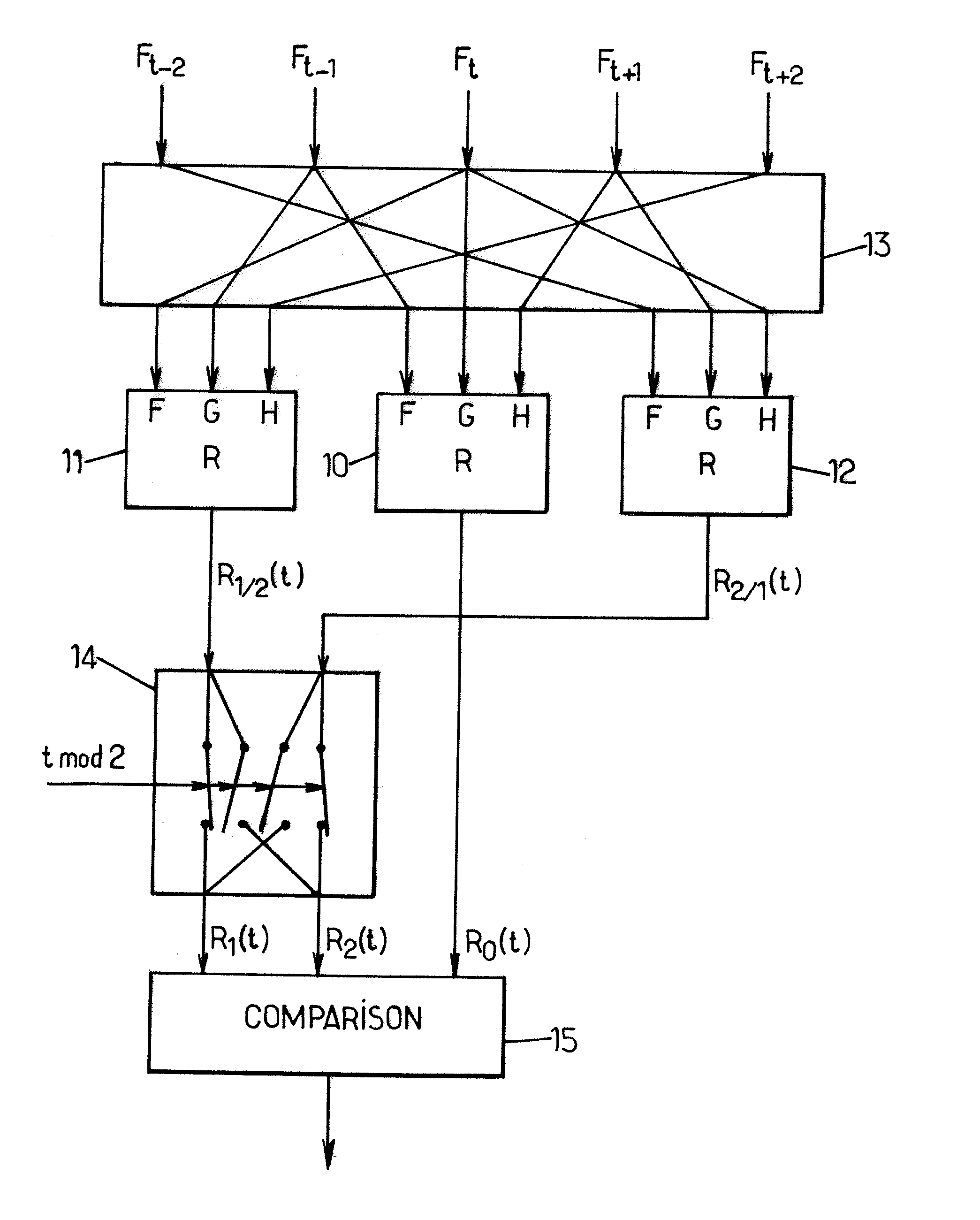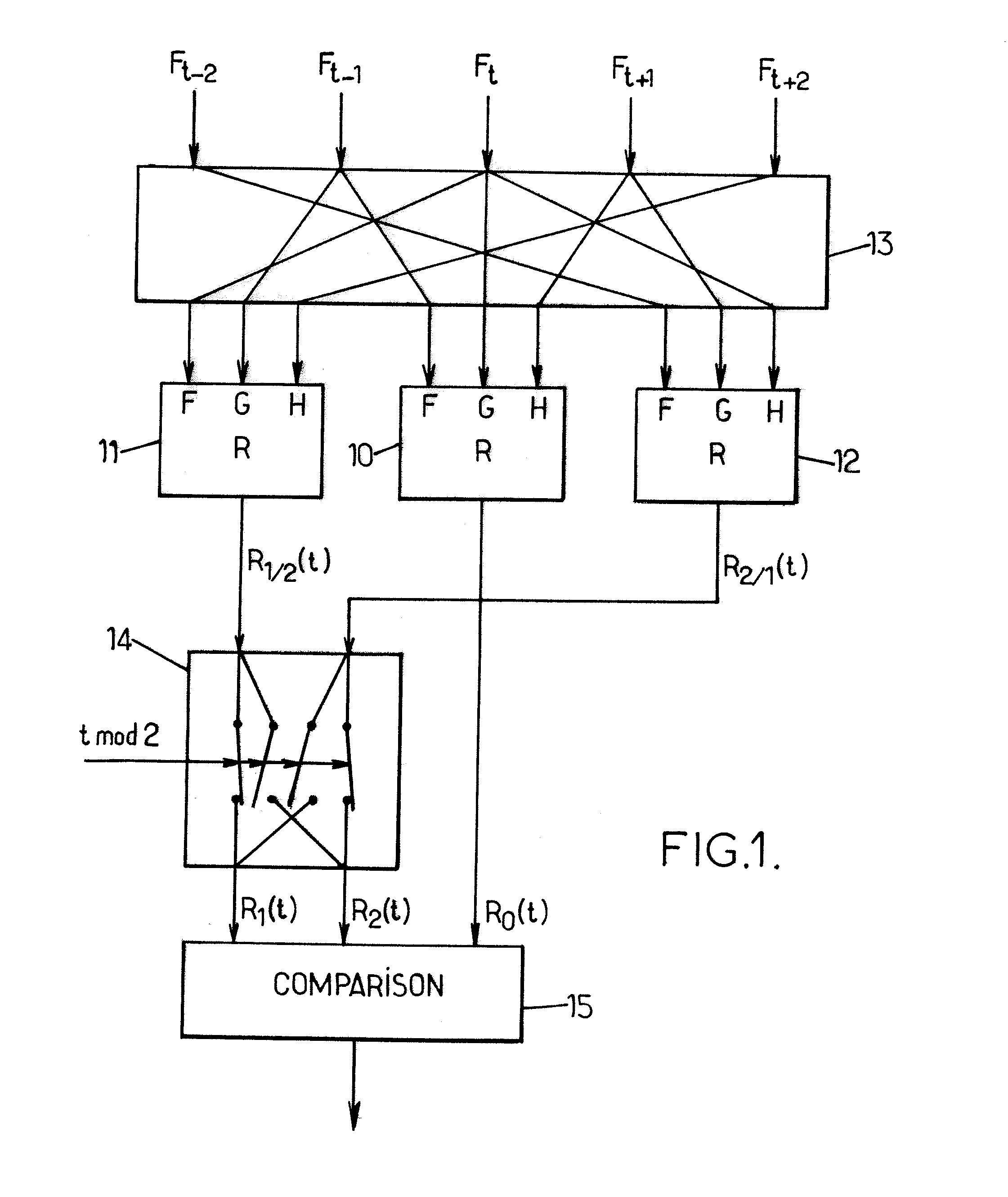Cadence detection for interlaced video based on temporal regularity
a technology of temporal regularity and interlaced video, applied in the field ofcadence detection of interlaced video based on temporal regularity, can solve the problems of difficult film cadence detection, the detection of time correlation cannot be used to detect 2:2 pulldown, and the problem of deinterlacing arises, so as to achieve efficient detection of 2:2 cadence and improve performan
- Summary
- Abstract
- Description
- Claims
- Application Information
AI Technical Summary
Benefits of technology
Problems solved by technology
Method used
Image
Examples
Embodiment Construction
[0046]An input video signal consists of a sequence of fields having integer ranks t. The signal can be considered as an array of pixels Ft(x, y), where x and y are the horizontal and vertical coordinates of the pixels and t is the rank of the field Ft, x and y being also represented as integers. To account for the interlaced form of the signal, we assume that for some parity p=0 or p=1, all the pixels Ft(x, y) for which (y+t)=p (mod 2) have a value provided in the field sequence while pixels Ft(x, y) for which (y+t)≠p (mod 2) are unknown or have a special value of “NA” (“not available”). In the following, Ft is used a short notation to denote the video field at time t.
[0047]The block diagram of FIG. 1 illustrates the proposed method of analyzing the interlaced video signal S, in an exemplary embodiment. At the input of the analyzer, five consecutive fields Ft−2, Ft−1, Ft, Ft+1 and Ft+2 (or more) are received in view of computing three metric values with respect to time t:[0048]a fir...
PUM
 Login to View More
Login to View More Abstract
Description
Claims
Application Information
 Login to View More
Login to View More - R&D
- Intellectual Property
- Life Sciences
- Materials
- Tech Scout
- Unparalleled Data Quality
- Higher Quality Content
- 60% Fewer Hallucinations
Browse by: Latest US Patents, China's latest patents, Technical Efficacy Thesaurus, Application Domain, Technology Topic, Popular Technical Reports.
© 2025 PatSnap. All rights reserved.Legal|Privacy policy|Modern Slavery Act Transparency Statement|Sitemap|About US| Contact US: help@patsnap.com



